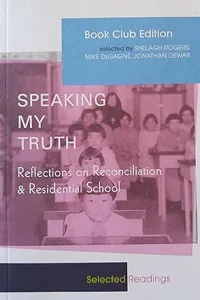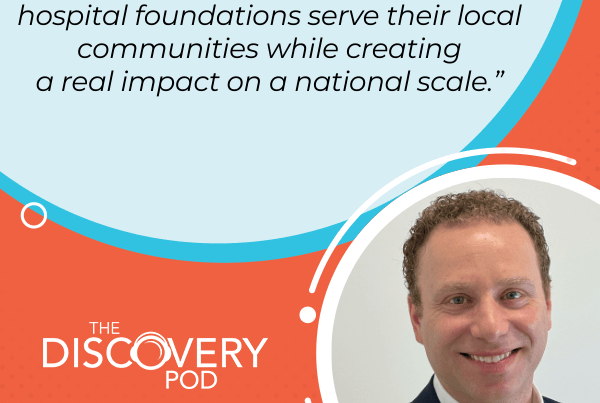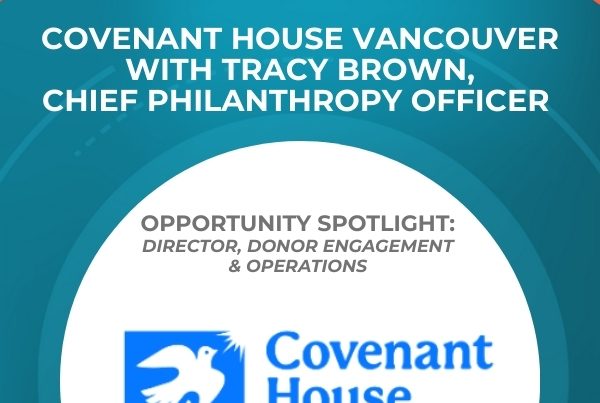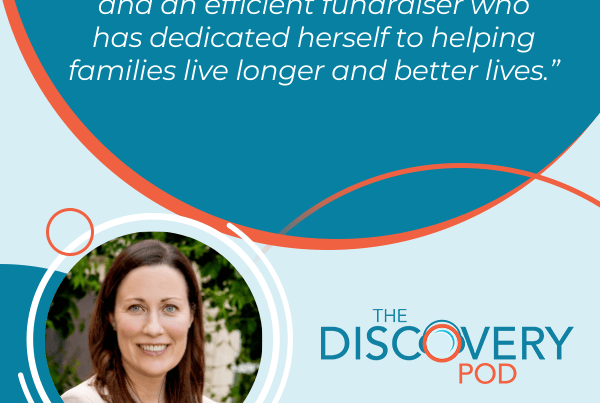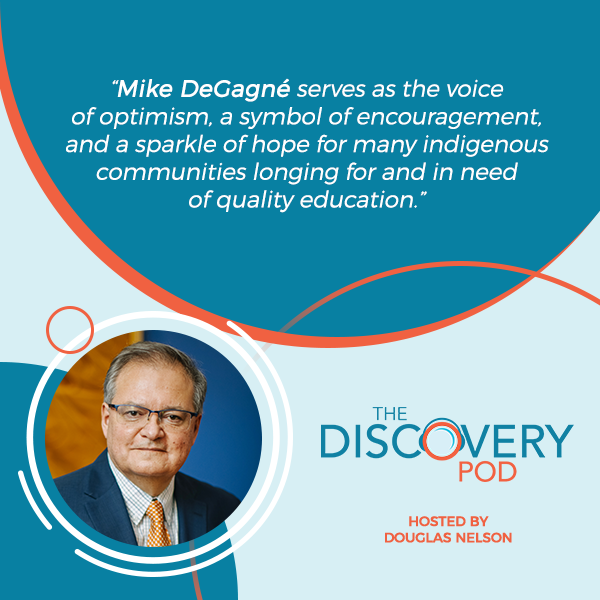
Many indigenous students still struggle to get access to proper education even in these modern times. In Canada, registered charity Indspire is making a real difference by investing in the education of First Nations, Inuit, and Métis people. Sitting down with Douglas Nelson is their president and CEO Mike DeGagné who talks about their noble mission as the largest non-government funder of indigenous education in Canada. Mike talks about their efforts to vastly improve their reach and overcome their biggest financial barriers by partnering with the right organizations. He also discusses the importance of indigenizing universities, creating indigenous student centers, and boosting student’s intellectual capacity for economic development and self-determination.
—
Listen to the podcast here
Indspire With Mike DeGagné, President & CEO
Welcome to the show, conversations with social profit leaders. My guest is Mike DeGagné, president and CEO of Indspire, an indigenous national charity dedicated to supporting and investing in the education of First Nations, Inuit, and Métis people across Turtle Island. You could call this episode, Two Optimists Walk Into a Bar. The conversation is full of excitement and hope on the part of Mike about the role of Indigenous leaders and Indigenous students in post-secondary education across Canada.
He talks about the history of Indspire and the role of education for Indigenous people over the last number of years and provides real insight into what is working, what institutions are doing right? Where institutions can do a little better job of leveraging the resources they’re putting into supporting their Indigenous students? His answer to the question, what are you looking forward to, is one of my favorite answers I’ve heard in the entire time doing this show. It’s the last question of the episode. You got to listen to the end to hear it, and it is worth every second in between. Please enjoy my conversation with Mike DeGagné.
—
Welcome to the show, Mike.
Thank you very much. Lovely to be here.
Mike DeGagné Of Indspire
Mike, I know many of our readers will be aware of the work of Indspire and what you and your colleagues lead. Maybe to start our conversation, you could tell us a little bit more about Indspire and what you’re particularly excited about these days.
I can tell you by an amazing coincidence, I was actually around when Indspire got started. It was a small project that landed on the desk of a government bureaucrat, and that was me. It was started by the Community and Social Services Agency in Guanajuato and Quebec. The reserve of Guanajuato is just across the river from Montreal. Here we are in the early 1990s, and what they decided to do was they thought it was time that we really should be talking about the high achievers in our community, for both our own community’s sake.
There’s a role model element to it, and for the non-Indigenous community’s sake. They can say, “These are very capable people, and starting to change the narrative around Indigenous people in Canada.” We started out simple. We chose a dozen people who we thought were exemplary in our community, the Indigenous community, broadly, First Nations, Métis, and Inuit. We put their images on a poster with an inspirational quote. We did that for several years.
One of the high flyers, laureates, John Kim Bell said, “We can do better than this. We should put this on TV. We should have an award show.” We kept choosing people. We kept choosing the exemplary citizens in our community from education and law, and politics, and their lifetime achievements. All sorts of things. Eventually, we got to today, where we’ve given out 400 Indspire Awards to our laureates, more than 400 now. We have a national television broadcast every National Indigenous Peoples’ Day in the middle of June.
That’s wonderful. Now, having been the bureaucrat that had this land on his desk, now leading the organization. I don’t want to jump too fast from beginning to end, but that must feel really good.
It really did. I never thought I would wind up at a future iteration of Indspire, but I did. It was fascinating to see how much of an impact those laureates, those individuals, had on our broader community. I think it did bring a message to Canadians that there is excellence here and we’ll thrive into the future.
I think one of the things that really jumped out at me when learning about Indspire was that you’re the largest non-governmental funder of Indigenous education in Canada.
Yeah. It’s remarkable. We never really thought that. There was a point in our history that it cost more to put on the broadcast of our award show than we were able to give out in scholarships. Through a lot of hard work, the excellent reputation of my predecessor, Roberta Jamieson, and eventually creating an organization that was really seen to be giving back to post-secondary Indigenous students. I think all of that together has launched us to a point where we now give about $32 to $33 million a year to students and to Indigenous students across the country in colleges, universities, and trade schools.
That’s really remarkable. You could put on quite a show for that amount of money.
That’s a spectacle.
From University President To CEO
That is really amazing. It’s great to have the opportunity to see the beginning, middle, and end, or catch up, you’re not at the end, over the course of your career. I want to spend a couple of minutes talking about you, because as I said when we were getting started, we’ve had a couple of post-presidency university presidents on the show. You were the president and vice chancellor at Nipissing University. Take us through a little bit from that I don’t want to be a university president anymore. I’m going to go out into the world and see how it brought you to where you are today.
One step before that, I was a 30-something-year-old executive in the federal public service where frankly, it received excellent training on. I was given the opportunity to start an organization with a really good group of committed people called the Aboriginal Healing Foundation. I was there for fifteen years. We were concerned with addressing the healing needs of people who had gone to Indian residential schools. I never thought that I would jump from there. I had an academic background, but I never thought I would jump from there into a university administration, nor did I think my first job at a university would be as president and vice chancellor, but there it was.
That doesn’t happen very often. For anyone reading, that is a rare step.
Never. In fact, I think that was the first. I think the right place, the right time, the right institution that wanted to look progressively, especially at its indigenous agenda. I started with Nipissing and was there for eight years. We really moved the Indigenous agenda along, but I think more significantly was the building of a relationship between the Indigenous community, the university, and the rest of Nipissing’s catchment area.
Was it direct from Nipissing to Indspire?
No, I was briefly at Yukon University, where I was the president and vice chancellor there and then came down to Six Nations and started working with Indspire.
How Indspire Evolved Through The Years
I want to ask so many more questions about the organization. Through our work here at the Discovery Group, we’ve had the opportunity to work with First Nations University in Saskatchewan with Jackie Ottmann, who’s the president there, and have some understanding of some of the challenges for that institution, but for Indigenous students, more broadly speaking, across the country. With Indspire, you’ve done something really remarkable in creating the wraparound for students in Canadian post-secondary. The Rivers to Success Program is one that, if anyone says, “What does Indspire do?” That’s one of the first things that comes up. Tell us a little bit about Rivers to Success and how that program has evolved over the last five years.
Since we, as Indigenous people, first started going into the universities, first allowed to go in time. We were allowed to go to universities in the mid-70s or early 70s. We have seen a handful of people enter as trailblazers, come in and graduate, and now we’re up to probably somewhere close to 33,000, 34,000, 35,000 Indigenous students across the country. That’s remarkable progress. One of the reasons most people go to university is because their parents went, or at least one parent.
It’s hard to be the first generation of people without any knowledge or advice from your parents because they never went. They have to show up at the front door of the university on the first day and say, “I know nothing about this institution, but I’m going to navigate this thing until I get to graduation.” It’s hard.
It is hard for Indigenous people to be the first generation of people to go to universities because their parents never went themselves. Share on XIt’s very tough. Especially since most of our students are a little bit older. They often have children of their own. They’re going back to get something that has real significance to a family. They’re driven, but they need the support to get through. Rivers to Success is one of those types of programs where we give all kinds of support to students as they go through to make sure that they’re not just a statistic on the first day as a participant in the university experience, but they are a graduate on the last day.
That’s what we really want to see happen. A lot of this, surprisingly enough, is cultural support. People who want to hear their language, people who want to have an opportunity to work together with others to practice traditional cultural practices and events. They want all of those things to reinforce to them that they belong there.
The Indigenization Process Of Institutions
I’ve heard that in my travels heard that referred to in some ways as indigenizing the institution. What does that look like? In our work, we see some universities that seem to be doing it quite well. Others are a little more stiffly approaching the problem or the issue. In your view, what is the indigenization process like, and where are we at generally speaking?
We’re a long way from where we were even in the ‘90s. In the ‘90s, I did my dissertation on the kinds of support and the structures that universities can provide to Indigenous students to help their success. At the time, it was very rare to see an Indigenous student centre, where you could go, you could meet other Indigenous students, you could get some support for maybe in the counselling or tutoring area. Do your homework with others who may be in the same class as you, elder support.
All those sorts of things. What we’ve seen since the ‘90s is this explosion in these kinds of centres, these kinds of actual structural supports, which has gone very well. Where we have to spend more time, I think, is looking at what happens in those centers and whether or not we’re meeting the needs of students who, as I said before, are just arriving at the door of the university and wondering how we’re going to navigate all this.
In my fundraising career, I started at the University of British Columbia just as the First Nations Longhouse was being constructed. I think it was like my second week on the job that was the opening of the Longhouse. Certainly, I’ve seen a number of those centers. The number of them increased significantly across the country, but also they are quite different. Unique to the people that use them and unique to the institutions that house them. What more needs to be done, or how can universities do a better job of activating those centers in those places?
I think they have to be seen for students first, which is important. Secondly, we have to start to look even more critically at how they can advance the academic life of the institution inside there. Are these the places where we can generate Indigenous studies programs, where Indigenous faculty that may be new to academia can come and get the support they need, and then be given perhaps opportunities for research that emanate from these centers? I think we’re doing a good job of focusing on students. We need to keep them top of mind, but I think the next challenge will be to see how they can support faculty in truly indigenizing the institution.
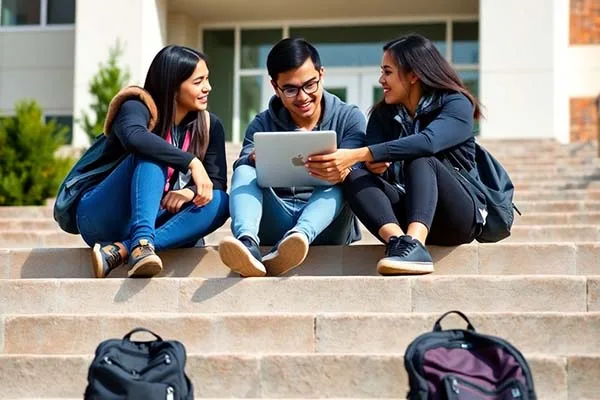
Indigenous Students: We are doing a good job of focusing on students. The next challenge we need to work on is how to support faculties in indigenizing educational institutions.
Which Institutions Are Doing It Right
With your experience having been president and vice chancellor of two institutions, now working with students attending countless numbers across the country, where are there examples of institutions getting it right?
We have so many institutions getting in right now. Just one that comes to mind was one that we worked with three weeks ago, the University of Victoria. What a tremendous support they provide to their students. What we did was we decided to try a networking mentorship type of program. We went out and we asked 30 of the students at UVic. Many of whom were senior students, so grad students, law school, medical school, these sorts of things.
Asked them to come in for a couple of days and spend time with us listening to some, I think, inspiring speakers and people who have already been through the education process and have navigated it well. Connecting them to each other in a way to have a cohort of people who can support each other as they move through. You’ve picked a lot of this, and what a spectacular centre they have. The other one on the other end of the scale would be the University of Toronto at Scarborough, where I’m a professor.
We’re just in the process of completing Indigenous House, a self-standing building that will house a centre for students, a meeting place for faculty, and an opportunity for the community around Scarborough. All those 6 or 7 First Nations that are as far away as Peterborough, for example, who can come in and use the center as a way to connect their community to academic life. That’s at the beginning stage, of course, the people like UBC and UVic are the granddaddies of this.
Becoming A Sparkle Of Hope
It’s encouraging. A lot of the work in our sector, particularly as it relates to reconciliation, there is so much work to do and there are so many wrongs to right that it’s very quick and easy or it’s very straightforward to say “Here’s all the things that aren’t working.” It’s important to identify those things. It’s also important to recognize the progress that’s being made along the way. Not to feel self-satisfied and stop, but to feel encouraged to keep going, and that messaging of encouragement and progress comes through, and how Indspire talks about itself and the work that you do to support Indigenous students across the country. How intentional is that positioning to be that voice of optimism and sparkle for hope in some areas that can be dark sometimes?
A lot of the dark work needs to be done, of course. Started my career in the remediation of the Indigenous residential schools field. There are a lot of stories, there’s a lot of pain, and there’s a lot of trauma. A lot of those things people would like to help with, but they don’t quite know how. They also feel that this is a government thing to address.
This is something that the government should step up and help address, historic loans and these sorts of things. Raising funds to address these issues is a very challenging task. On the other hand, you have to be really intentional with an Indigenous education to be positive and to emphasize the possibilities. I’m finding that in the dark times, it’s lonely work.
When you’re talking about something as hopeful and promising as Indigenous education, people will stop you in the street and say, “How can I help? I’d love to give you $10 a month, and if I can fund a young woman with a small family who wants to go back and become a nurse, that would be one of the great satisfactions of my philanthropic life.” You have to be very intentionally positive, not where positivity isn’t natural, but you have to emphasize to people what’s really possible and how their dollar can help a person. When you can make that connection in anything, whether it’s health or education or otherwise, great things can happen as they’re happening here.
When you connect your intention with your dollars, many great things can happen. Share on XYou don’t have to choose between doing the important historical work and writing. It’s not that you don’t set that aside or pretend that doesn’t have meaning or need to be done, and just focus on the good stuff. It really is both. In our social profit sector and in Canadian post and the Canadian post-secondary system, organizations, many of them are trying to do both and are not sure which, how much weight to put on which hand. It seems sometimes the conversation gets stalled or the action gets stalled. You’ve probably seen that happen, I’m not going to ask you to point fingers. What can leaders do in their organizations when there is that sense that things aren’t moving as quickly or moving the way they need to go?
Leaders have to focus on things that their donors and their audiences, their publics, will understand. For years and years, I would give talks about residential schools or reconciliation. I’ve done it in this country and other countries, and people are always very sympathetic, empathetic. They come up to you after the talk and they’ll say, “That’s terrible. I never knew that was happening. How can I help?”
You have to have an answer for that. I never really had an answer for many years. “I appreciate your support.” It might be an answer, or “Keep thinking good thoughts about us,” or “If you get a chance to tell your member of parliament, tell them that it’s an important issue for you.” Those sorts of things. With Indigenous education, there’s a natural narrative that emerges.
As a in leadership, you’ve got to make sure that you’re really solid on that narrative. When someone comes to you and says, “How can I help?” “There are three ways you can help. The first one is to do this, the second one is to do this, the third one is this, which one would you like?” You really have to be solid on that. With Indspire, it’s easy. Excellence and education. It’s a no-brainer, and everyone appreciates it.
I think not everybody, but there’s an increasing understanding of how important Indigenous people will be in this country. Important now, but even more so in the future, especially in terms of economic development and all sorts of things. You’ve got to have a good answer. It’s got to be top of mind. It’s like developing a case statement for a fundraising campaign. It’s not unusual for it to take a year and for you to talk to a thousand people. That’s the thing you have to think through before you develop a really robust response to “How can I help?”
Was there a moment in time when you realized I need a better answer for this question?
Yeah, I think there was. It was just always grasping. Until actually early on, a group of us thought, there are so many good residential school stories that need to be told. Some sad, some positive, hopeful, some just nostalgic in some ways for childhood, and these sorts of things. We said, “We’ll get 20 or 30 of our closest friends together and we’ll produce a book, a little book.” We edited a book, which was called Speaking My Truth, still available on the internet, not for purchase, but for downloading.
The answer became, “Would you like to do something? Great, here’s a book, I want you to read it.” We even went to so far as with our colleague Shelagh Rogers of CBC said, “If you are willing to discuss this book at your next book club, we will send you free copies for everybody.” We probably distributed 50,000 free copies to book clubs across the country. It wasn’t a marketing or advocacy piece that we anticipated filling, but we underestimated the interest people had in understanding residential school issues and Indigenous issues. It was remarkable.
What a profound Canadian story that is. The role of the CBC and playing and distributing that. That’s great. When people ask you that question now, what do you say? What can I do?
I say, “Look, the way forward is education.” There’s no two ways about it. We are moving very quickly in Canadian society through government initiatives and other initiatives, and corporate initiatives to make things right with Indigenous communities. We’re doing that in a big way. We have settlements for past historic grievances. We have economic opportunities that we never thought we’d have. As we settle and we decide to come to terms with all of that funding and all of those settlements, we also have to ask ourselves, “Who’s going to do this? Who’s out there to do this?”
The way forward is education. There are no two ways about it. Share on XOur communities are not filled with people who are economic development experts or business professionals or entrepreneurs, or people who can run a child welfare agency, and these sorts of things. We have some people, but we need more. When people ask me now, I say, “Look, we are in need of more bright lights. We have the talent. We just need to develop it. If you want to give us the money to provide a scholarship for a young Indigenous person, that’s the way to do it. That’s the way to move us forward.”
That’s a great answer. I hope a lot of people ask you what they can do to help in the next couple of weeks.
I hope so, too. I’m ready.
Barriers Disproportionately Impacting Indigenous Students
One of the points of information, one of the things that I learned a little bit in getting ready for our conversation, was just that post-secondary has gotten more expensive for everyone or anyone that wants to attend. The financial barriers for Indigenous students are more significant, even more significant than they have been in the past. What are those barriers, and why are they disproportionately impacting Indigenous students?
Indigenous people are still at the lower end of the socioeconomic scale, especially those living on reserves. We haven’t lifted the Indigenous community out of poverty. There are some, yes, but not all. There’s a lot of work to do in that area. That’s one of the significant barriers. By the way, when I was doing some research back in the ‘90s, I would rely on reports that came out of some of the leading universities out west. Even at that time, they were saying that as indigenous students were identifying the biggest barrier to education as financial.
Financial shortcomings have spanned the decades. I think there’s a lot more for us to do in that regard as long as we keep providing what’s essential for students. I will say this, and this is not popular, but I will say this, that Canada has a remarkably affordable post-secondary education environment. When we think about what other students in other countries have to commit to get to the graduation day, I have to say that Canadians are very lucky, and it may not always be that way. Think about signing up pretty soon.
If you’re thinking of going back to school, you should go back now.
You should go back.
The Need To Develop Intellectual Capacity
You talked about the intellectual resource and the capacity that needs to be developed in indigenous communities across the country. How will the emerging wave of economic nationalism, and we’re recording this during the time of the federal election, where the two main leaders are talking about approvals in fifteen minutes or it’s free, or some version of that. It’s going to have a lot of implications for Indigenous communities across the country. Indigenous communities and Indigenous governance are going to be central to whether that goes through, how that goes through, and when. Is that encouraging? Is that good, or is it concerning? How do you make sense through that lens of needing to develop the intellectual capacity or the intellectual resource that you have?
I think that is encouraging in some ways. There are some jurisdictions in Canada where the Indigenous population and its labour and intellectual capital moving forward are going to be important. I’m thinking that in jurisdictions of Western Canada, it’s going to be critical that we have people who are highly skilled and ready to respond. I don’t think the Indigenous community can stand up and put up its hand and say, “We want a piece of whatever Indigenous economic development is out there.” We want to make sure that we get our fair share. I think we should get our fair share, but we also have to step up and say, “Let’s get ourselves ready to make the best use of that fair share.
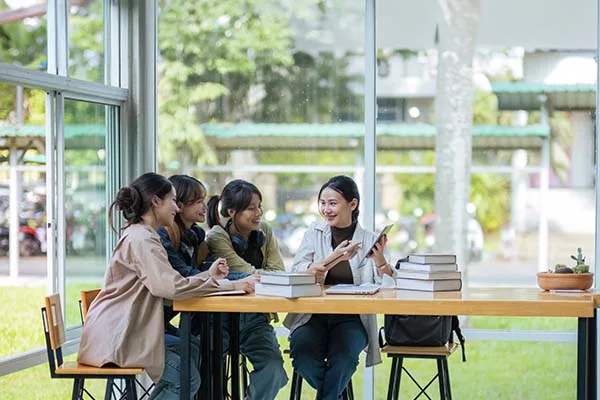
Indigenous Students: There is a lot of hope for the future. With the right training, we can get there.
Let’s get our human resources in place and all of the skill sets we need to make sure that we can take advantage of them.” The university systems, the college systems, and the trade systems are going to be absolutely critical in producing people quickly to address that challenge. I think we can do it. I think we need to stand up through our advocacy to say, “Don’t forget us. We are right here.” A lot of this is going to be dependent on our say so, as pipelines and railways, and everything travels through our communities and our territories. We’ve got to be ready, and the larger community of Canada has to be ready to make sure they consult us.
Looking Forward To Better Things
There’s so much reason for optimism in that. Just as someone who watches the news and cares a fair bit about these things, if you’re like, “I feel like we’re missing part of the conversation here.” I suspect both those party leaders are grown-ups and have people around them who know that they cannot just pretend that’s not part of the conversation. We’re not a political podcast. I think that’s the most political thing I’ve ever said on here. As we come to the end of our conversation, I want to ask you a question. I really look forward to asking all of our guests, Mike, what are you looking forward to?
I’m looking forward to things continuing to get better. I always think of the modern history of Indigenous peoples as starting when we got the right to vote in 1960, which is in my lifetime. What that vote and what that franchise said was that here’s a ticket, you get to come in. You get to be a part of what we are collectively planning for this country. Now, that didn’t start the first day, but it took a long time, a lot of advocacy, a lot of political maneuvering, and table pounding to get us to the place we are today. When we used 1960 as a reference point about where we were on reconciliation and human rights and in our inclusion into Canadian society, we have come a long way in 65 years.
It has been remarkable. I think we have to now write a speech for some young woman 40 years from now who’s going to get up in our university class and she’s going to say, “We did all the right things in 2025 and now the Indigenous community is blooming, it’s blossoming, it’s taking its rightful place in Canadian society.” I think that speech can be written now. A lot of the things that are going to be required to do, we are capable of doing right now, policy changes, etc. There’s a lot of hope for the future, and with the right training, we can get there.
Mike, you and your colleagues at Indspire are doing so much to make that speech a good one, 25 years from now, 40 years from now. I thank you so much for your work and for being on the show.
It’s a pleasure. Thank you very much.

